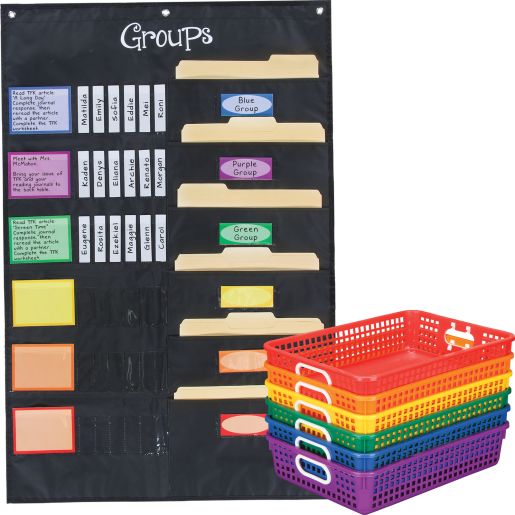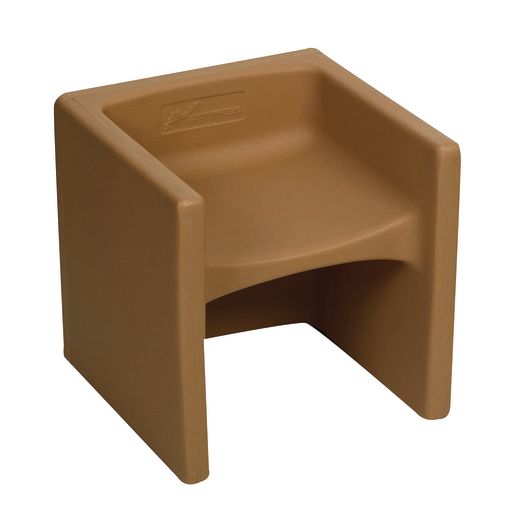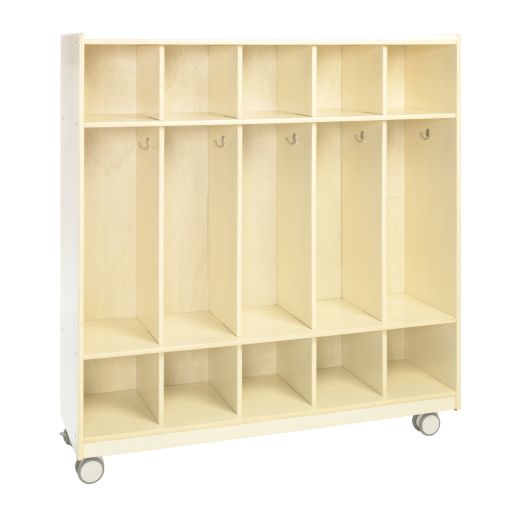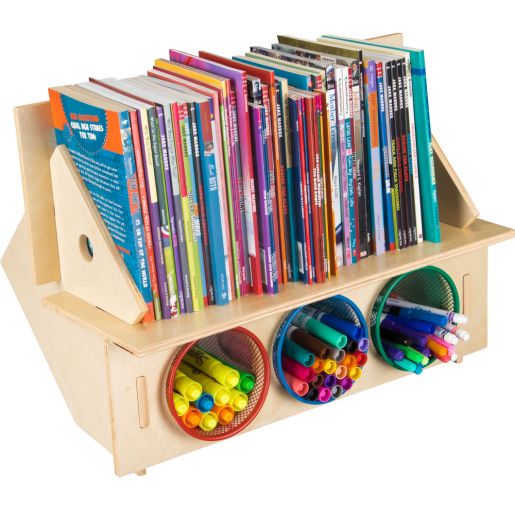Description
This comprehensive organizational system brings structure and independence to multi-child homeschool environments through a color-coded approach that works for various ages and learning styles. The large 26¾” by 40¾” pocket chart serves as a visual command center, while six matching plastic baskets keep materials organized and accessible for different groups or individual children.
The system includes everything needed to get started: a substantial pocket chart, six colorful group direction cards, coordinating file folder labels, 32 durable laminated name sticks, and six generously-sized paper baskets. The wipe-clean surfaces handle daily use well, and the sturdy construction means this investment will serve your family for years across different subjects and grade levels.
How Homeschoolers Can Use This Product
Organizational Benefits for Multi-Child Families
This system shines when you need to manage several children working on different subjects or at different levels simultaneously. The color-coding eliminates confusion about which child should be doing what, reducing the constant “What am I supposed to do next?” questions that can interrupt your teaching flow with other children.
The visual nature of the system helps younger children who can’t read detailed instructions yet still follow along with their assigned activities. Children can check their own progress and move to the next task without waiting for parent guidance, fostering the independence that makes multi-level teaching possible.
Subject and Activity Management
Learning Stations: Set up different colored groups for various subjects like math (red), reading (blue), science (green), and art (yellow). Children rotate through stations on their own schedule, with materials and instructions clearly organized in matching baskets.
Independent Work Time: Use the chart to assign different types of independent work based on each child’s needs. One child might have math drill sheets in their red basket while another has creative writing prompts in their blue basket.
Seasonal and Unit Studies: Organize different aspects of your current unit study by color. During a study of ancient civilizations, the green group might focus on Egyptian culture, blue on Greek mythology, and red on Roman engineering.
Building Life Skills and Responsibility
Daily Routines: Beyond academics, use the system for household responsibilities. Morning chores, afternoon tasks, and evening duties can each have their own color, teaching children to manage multiple responsibilities throughout the day.
Self-Monitoring: The name sticks allow children to track their own progress through tasks. This builds executive function skills as they learn to monitor their work completion and plan their time.
Sibling Cooperation: When children share certain activities, the visual system helps them coordinate without parent mediation. They can see when it’s their turn for computer time or when they should join a sibling for a shared activity.
Conversation Starters and Learning Extensions
Use the daily organization as a springboard for discussions about time management, personal responsibility, and family teamwork. Ask children to reflect on which types of tasks they complete most easily and which ones challenge them, building self-awareness about their learning preferences.
The color system itself can spark conversations about organization in the broader world. How do libraries organize books? How do hospitals use color coding? These discussions help children understand that organizational systems exist everywhere and serve important purposes.
Flexibility for Different Educational Approaches
Unit Studies: Group all materials for different aspects of your current theme, allowing children to explore various angles independently while you work intensively with one child.
Traditional Subject Division: Keep each subject’s materials and assignments clearly separated, particularly helpful for older children who need to work through multiple subjects daily.
Mixed-Age Learning: Use colors to differentiate difficulty levels rather than subjects, allowing siblings to work on the same topic at appropriate challenge levels.
The system adapts to your family’s changing needs throughout the homeschool years, making it a practical long-term investment in your educational organization.





Reviews
There are no reviews yet.